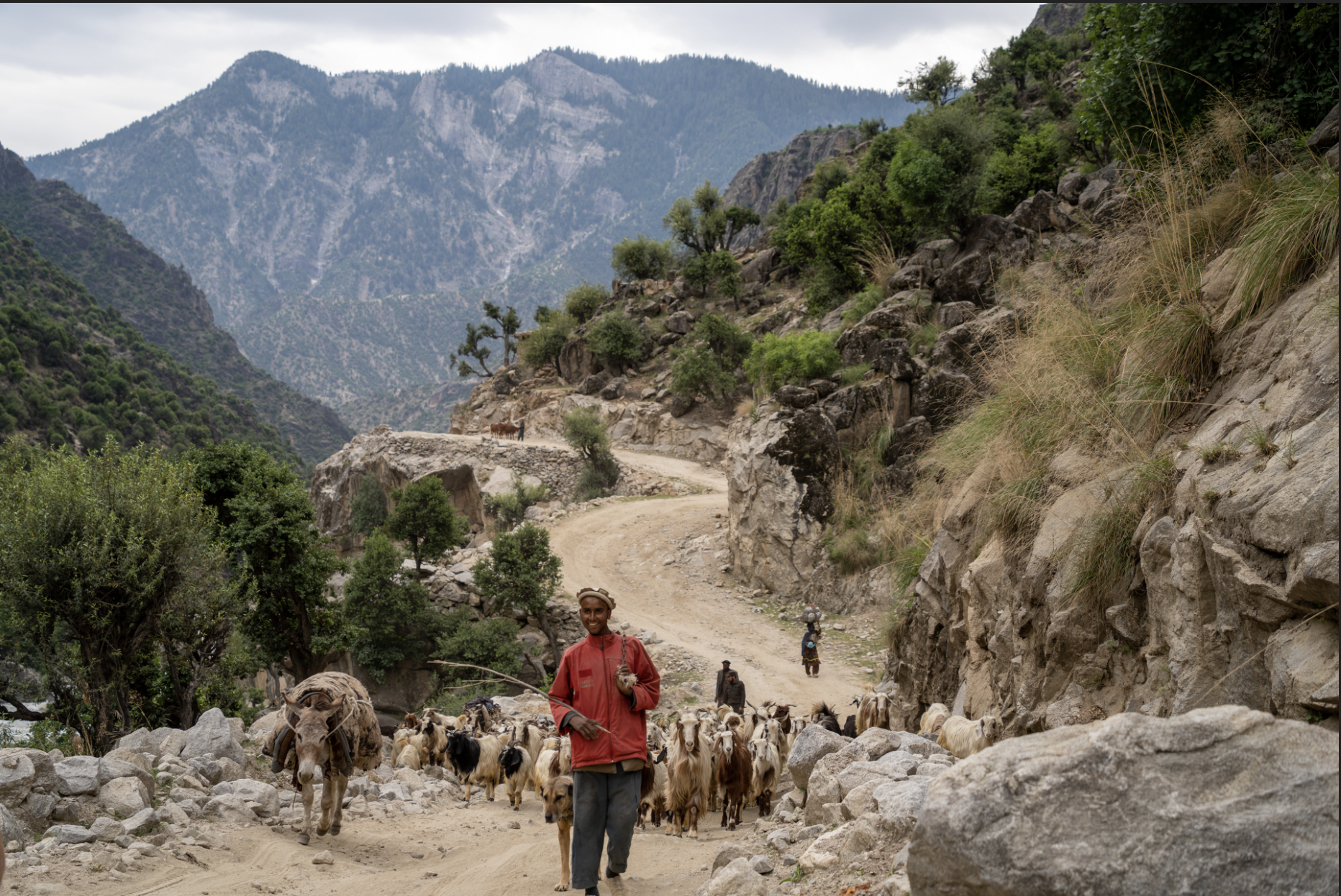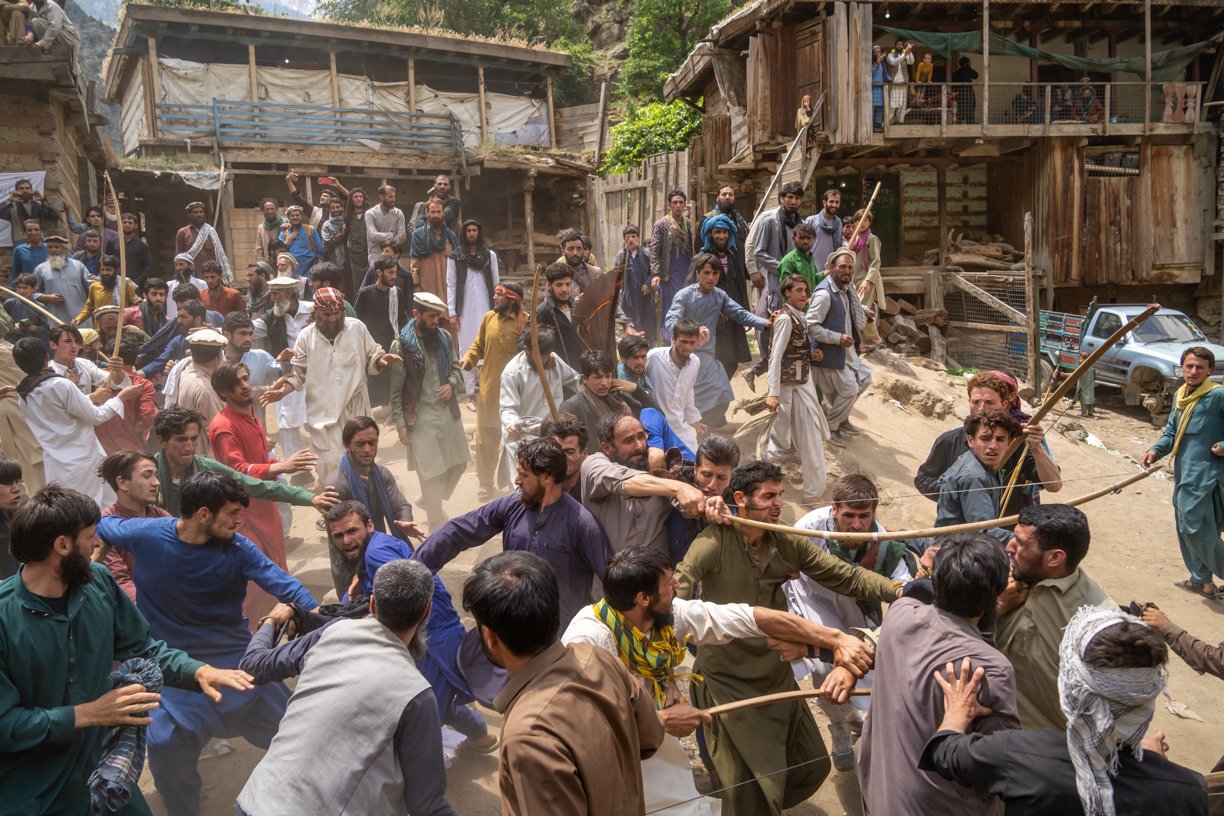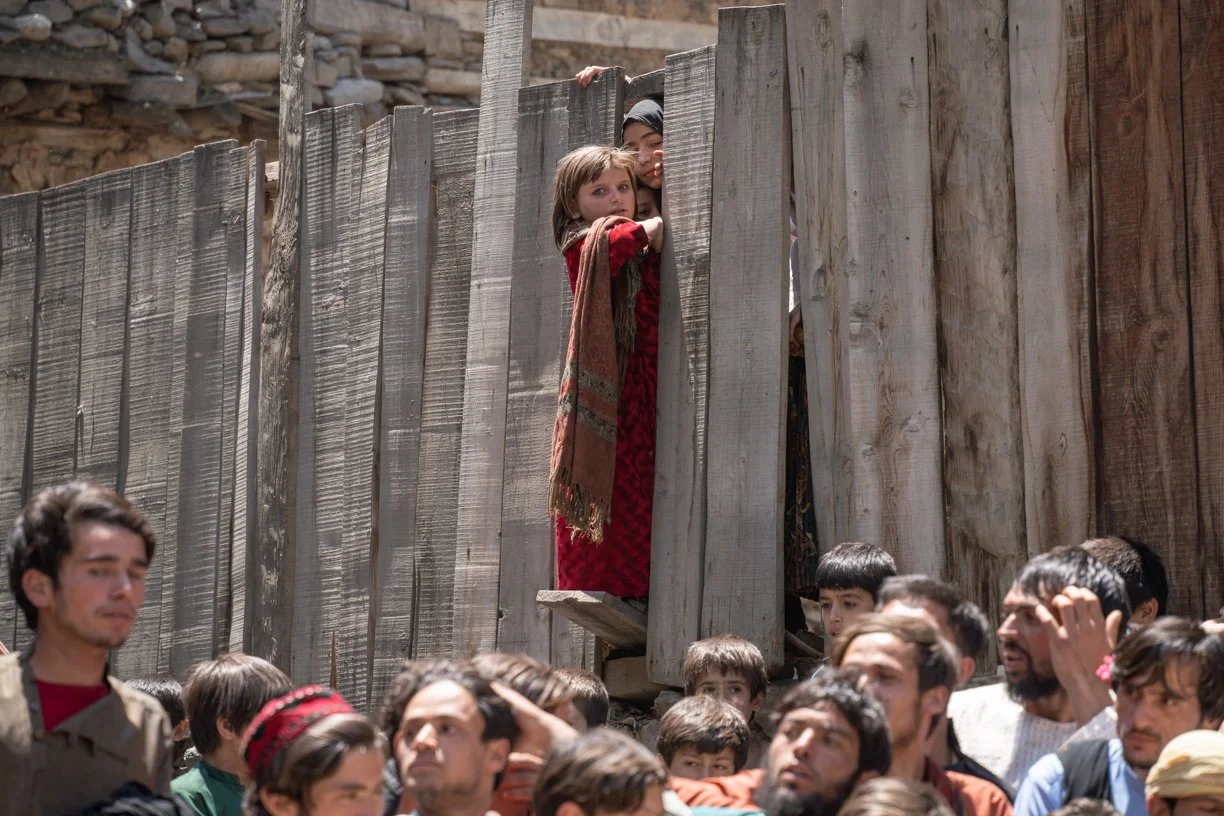Travelling in Nuristan
Joe recently spent a month in Nuristan with fellow traveller and fellow photographer James Bessant-Davies, working on an itinerary which Safarāt will be launching for July 2024.
Whilst we haven’t launched our Nuristan tours, please let us know if you are interested to join the waiting list to join us by emailing us on nuristan@safarat.co
James wrote about his experience of travelling in Nuristan with Safarat in Bylines Cymru. He has allowed us to reproduce his article here:
Jame’s portrait of the owner of the oldest house in the kamdesh valley - displaying traditional Nuristani carpentry throughout. By James Bessant-Davies
The region of Nuristan gained exposure in the UK through Eric Newby’s 1958 book A Short Walk in the Hindu Kush. It is a series of enclosed valleys nestled in the southern Hindu Kush, sharing a border with the Chitral district of Pakistan. Formerly known as Kafiristan, or ‘the Land of the Infidels’, Nuristan was forcibly converted to Islam in 1896. It remains culturally distinct from much of Afghanistan, a quality the inaccessibility of the region has done much to preserve. In its east, the valley of Bashgal maintains strong traditions of archery, including the Kamdesh Annual Archery Competition.
I grew up with Afghanistan constantly in the media. The atrocities of the Taliban and wars played out within its borders both terrified and captivated me. When journalist Joe Sheffer invited me to go with him on an exploratory trip to Nuristan, I accepted almost too readily. Joe is in the process of establishing Safarāt, a Kabul-based concern aiming to enable tourism in Afghanistan. Safarāt – Arabic for ‘journeys’ – has attracted mixed reactions from journalists, politicians, and others. The arrival of Western tourists in Kabul threatens to fund and legitimise the Taliban regime. What good could travel to Afghanistan provide for the Afghan people?
The magic of Mandigal village in the Kamdesh village. Picture by James Bessant-Davies
Peeking out
Our visit to Nuristan began in the district capital Parun, a small, dark settlement in the centre of the Wama Valley. We received a warm reception from the provincial governor, and collected the necessary permissions for free passage in the region. From Parun we followed the valley onwards to Isthivie, its northernmost settlement. As the altitude gradually increased, the vertical sides of the gorge withdrew, revealing imposing alpine scenery. Water fell from the snow-capped peaks of the Hindu Kush, rushing to add impetus to an already fast-flowing river. The smell of Himalayan cedar drifted from thick, luscious forests.
We drove past dark-featured men herding scores of goats to nearby high pastures, and occasionally women carrying groceries and dressed in deep blue burkas. They recoiled from our approach, crouching by the side of the road, their hands covering the eye-slits of their burkas. Young girls peeked out through windows and gaps in fences, watching our vehicle’s progress with eyes full of curiosity. Such interactions filled me with indescribable shame and powerlessness. They served as reminders of the stark realities faced by Afghan women and girls, confined by appalling societal constraints and the grip of a militant, repressive regime.
In Ishtivie we met with the village elders, and discussed the possibility of walking the mountain pass to the neighbouring valley of Kamdesh. The archery contest there was two days away, but the journey would take at least ten hours by road. A guide volunteered to accompany us, warning of deep snow and limited oxygen. We agreed to meet him at sunrise the next day.
The Parun Valley in Nuristan - by James Bessant-Davies
The meaning of Inshallah was realised when we woke the following morning. It was 3am, and a heavy rain hammered on the windows of Parun’s only guesthouse. Layers of wispy cloud traced their way through the first of the morning light. Our mountain pass lay somewhere in those clouds, around 1500 metres higher than Parun. At such heights, rain was bound to fall as snow.
Had this been Scotland, the journey might have been considered, but neither of us were appropriately equipped. And if anything were to happen there would be no help. The evening before we had been sternly informed by a Taliban official that, if we chose to attempt the hike, the responsibility would be ours. In Afghanistan you have to mitigate risk.
We left the Wama Valley with incessant Bollywood-themed music blaring via the USB stick of our Nuristani guide, and settled down for the arduous journey ahead. Music is haram under the Taliban, and at every checkpoint the 4×4’s stereo was hastily silenced. To avoid unnecessary questions, we wore baggy shalwar kameez and obligatory Chitrali caps.
At one such stop I was asked for identification, and a bewildered elderly Taliban guard stared with incredulity at my British passport. He reached for my face, shouting, “Nuristani! Nuristani!” Many people of the central valleys of Nuristan have distinctly European complexions, attributed to Greek blood left behind by the armies of Alexander. I found this myth harder to disbelieve later, when I stared into the blue eyes of a blonde mountain shepherd. He pointed to his face, then mine, and produced a battered smartphone for a selfie.
Captured by Nuristan
Transportation is a major issue affecting the region. The forking valleys of Nuristan open into Kunar province in the south. In the north they are hemmed in by the impenetrable heights of the Hindu Kush, preventing onward travel to Badakhshan. Direct travel between valleys is similarly unfeasible due to the almost vertical valley sides. Dirt tracks follow the river’s course down to Kunar, and these provide the only means of passage.
In the rainy season these tracks flood, preventing goods from entering and exiting, and effectively trapping Nuristan’s inhabitants. Our own journey was halted as we entered Kamdesh District. A sudden rise in temperature had warmed the glacier surrounding the Nechangal massif, increasing the height of the river by eight feet and reclaiming a section of track. A large excavator was miraculously produced, which began carving out a new road from the side of the ravine.
We woke early the next morning in the settlement of Mandugal, a central village in Kamdesh district. The street was thronged by the population of nearby villages, and an excited tension was in the air. The day marked the finals of the Kamdesh Annual Archery Competition. The teams of 14 villages had already been eliminated, leaving just the elders of Mandugal and Paprok villages.
Prize money was at stake, and surreptitious wagers were placed by zealous villagers. Targets were placed on either bank of a wide river, and the opposing teams had to score a number of accurate hits to win. The year before, a 12-year-old boy had lost an eye when an arrow strayed into the crowd. This knowledge did little to prevent the enthusiasm of the spectators, who assembled themselves mere feet from the targets in a haphazard approach to health and safety.
Paprok were the defending champions and, after some hours of intense competition, looked likely to keep their title. This led to disquiet amongst the residents of Mandugal. A fleeting figure dressed in a lime-coloured shalwar kameez dashed towards the trophy, taking matters into his own hands. Leaping with arm outstretched, he grasped it and ran back into the crowd.
Violence erupted instantly. Competitive bows became weapons, and the trophy’s potential as a blunt instrument was realised. I stood dazed in the middle, surrounded by chaos. I slowly became aware that the noise of gunshots had been added to the general din. The Taliban had arrived, and were firing shots in an attempt to quiet the melee.
Gradually, order was restored. The results of the contest were declared void, with a rematch scheduled for the following day outside the house of the regional governor. For the rest of that day, many a black eye could be seen developing colours in Kamdesh.
The aftermath of the district archery final. By James Bessant-Davies
Bearing the weight
That afternoon we ascended from the valley floor to Najaran village, which boasts the oldest standing house in Nuristan. Inside we were greeted by a number of children, some goats, and the house’s owner. He showed us into a long, dark room where huge walnut wood pillars bore the weight of substantial beams. More walnut formed the window frames, beautifully carved with intricate patterns in traditional Nuristani style.
Some days earlier we had visited a carpentry workshop in Parun, and watched benches and wardrobes being hastily assembled with little thought to structural integrity. Indeed, craftsmanship has noticeably suffered across all trades. Generations come and go, and traditional techniques fade in the face of conflict and turmoil. Commodities manufactured in Pakistan, such as RGB strip lights and plexiglass windows, contribute to a rapidly shifting architectural vernacular, leaving behind the artisanal crafts of stonemasonry and drystone walling.
Change has forced itself on other ways of living. Historically, it was not a woman’s job to tend to crops and cultivate land; it was a joint responsibility shared within the family. Along with cooking and housework, it is now considered a female task. In Mandugal, I asked a history teacher why these responsibilities have changed so much. He was educated in Pakistan, and spoke good English.
“The men don’t work in the fields because we have forgotten what it is to work. Our lives have been spent at war, as fighters. Ploughing is now the work of wives and daughters.”
Afghanistan’s working generations grew up in the shadow of gross instability and conflict. For now at least, the war is over. The Taliban were responsible for much of the insurgency under the previous government. Now, under their control, a warped stability has fallen over Afghanistan. Within this semblance of peace, there may be opportunities for a resurgence of the old trades and traditions, for the restoration of a cultural heritage that has been lost. Perhaps in Nuristan a return can be made to the lifestyle of pre-war times, when responsibilities in the house and fields were divided with greater equality.
Upon returning to my home in Wales, I could not feel more distant from the splendidly vibrant bazaars of Kabul, or the remote villages we visited in Nuristan where life revolves around tight-knit community and barter-era trade systems. The Taliban felt, quite correctly, thousands of miles way. Yet both countries possess a deep tradition of welcome.
Wherever we travelled in Afghanistan we were greeted with the warmest hospitality and steaming mugs of chai. We were accepted and permitted to talk openly, in turn hearing personal views from past decades of turmoil. It is not differences in thought or culture that breed distrust, but rather separation between peoples and communities. In the ‘West’ we are besieged by narratives that oversimplify the complexity of Afghanistan and its people. Individual lives are forgotten, eclipsed by the cacophony of political rhetoric and sensational headlines. It is these very lives that demand our attention and human connection.
Many ethical questions surround travel to a country occupied by such a regime. The decision to travel should be made conscientiously, with much deliberation. At worst, Western tourism could fund and legitimize the Taliban’s government, both domestically and internationally. However, to turn our backs on Afghanistan, to withdraw from engaging with its people, would be to relinquish an opportunity for connection and understanding. Visiting Afghanistan has given me an intimate appreciation of the value of such travel, and its potential to bring very real change on a small scale.
All images ©️ James Bessant Davies







